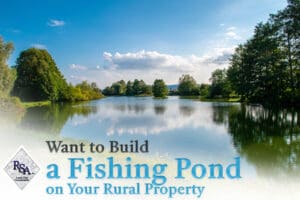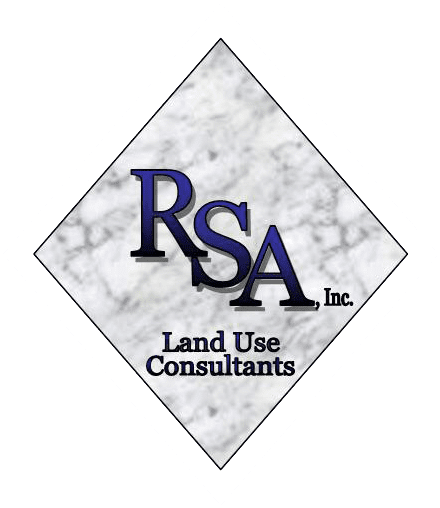 The plan to build a fishing pond on your rural property can be a rewarding project, offering a serene environment for recreation, improving property value, and even supporting local wildlife. However, the process is far from straightforward. Land use regulations and environmental considerations must be carefully addressed to ensure compliance and project success, especially in Southern Oregon. Partnering with experts like Richard Stevens & Associates can help you navigate the complexities of land use planning and avoid costly mistakes.
The plan to build a fishing pond on your rural property can be a rewarding project, offering a serene environment for recreation, improving property value, and even supporting local wildlife. However, the process is far from straightforward. Land use regulations and environmental considerations must be carefully addressed to ensure compliance and project success, especially in Southern Oregon. Partnering with experts like Richard Stevens & Associates can help you navigate the complexities of land use planning and avoid costly mistakes.
Before You Build a Fishing Pond, Consider These Factors:
1. Zoning and Land Use Restrictions
Zoning laws dictate how land can be used and may impact whether you can construct a fishing pond on your property. Southern Oregon counties like Jackson and Josephine have specific zoning classifications, including Exclusive Farm Use (EFU) and Forest Resource (FR). These classifications often come with restrictions on water usage and land modifications.
Key steps include:
- Reviewing your property’s zoning classification.
- Understanding whether your proposed pond aligns with the permitted uses in your zoning category.
- Applying for a conditional use permit (if required).
Richard Stevens & Associates can help determine whether your project complies with zoning laws and secure the necessary permits. We are your local experts for zoning laws and land use provisions in Southern Oregon and Northern California.
2. Water Rights and Appropriation
In Oregon, water rights are a critical issue when planning a fishing pond. Simply having a water source on your property does not grant you the right to divert or store it. The Oregon Water Resources Department (OWRD) regulates water rights, and any new pond that involves water diversion or storage likely requires a water rights permit.
Important considerations:
- Determine whether your property has existing water rights.
- If not, apply for a new water right or modify an existing one.
- Work with OWRD to assess whether your pond impacts downstream water users or local ecosystems.
Failing to secure water rights can result in fines and mandatory removal of the pond.
3. Environmental Impact Assessments
Building a fishing pond may have environmental consequences, such as altering natural habitats, affecting water quality, or impacting local wildlife. State and federal regulations, including those from the Oregon Department of Fish and Wildlife (ODFW) and the U.S. Army Corps of Engineers, may require environmental impact assessments before approving your project.
Key environmental concerns include:
- Potential disruption to wetlands or riparian areas.
- Impacts on endangered species or their habitats.
- Water quality issues, such as sedimentation or nutrient runoff.
You may need to submit an Environmental Impact Statement (EIS) or other documentation. Our team at Richard Stevens & Associates can help evaluate environmental risks and propose mitigation strategies to streamline the approval process.
4. Wetlands and Riparian Zone Regulations
Wetlands and riparian zones are heavily protected under both state and federal law. You may face additional regulatory hurdles if your proposed pond location falls within or near these sensitive areas. The Clean Water Act (Section 404) and the Oregon Removal-Fill Law are two primary regulations that could apply.
Steps to address these concerns:
- Conduct a wetland delineation study to determine the boundaries of any wetlands.
- Work with the Oregon Department of State Lands (DSL) to secure removal-fill permits if needed.
- Avoid or minimize construction activities within riparian zones to reduce environmental impact.
5. Erosion and Sedimentation Control
Erosion and sedimentation during and after pond construction can affect water quality and surrounding ecosystems. Southern Oregon’s varied terrain, from valley floors to steep slopes, may exacerbate erosion risks if not properly managed.
To mitigate erosion:
- Develop a sedimentation and erosion control plan.
- Use best management practices (BMPs), such as silt fences, straw wattles, and revegetation.
- Obtain an erosion control permit from your county if required.
6. Permitting and Approvals
Constructing a fishing pond involves multiple layers of permitting. In addition to water rights and environmental permits, you may need:
- Building permits for dams or other structures.
- Grading permits for excavation work.
- Conditional use permits, depending on local zoning laws.
Navigating the maze of permitting agencies, including the OWRD, DSL, and your local county planning department, can be daunting. Richard Stevens & Associates can provide you with advice and direction concerning these efforts to ensure your project remains on track.
7. Long-Term Maintenance and Liability
Once your fishing pond is complete, maintenance and liability become ongoing concerns. Regular upkeep is essential to preserve water quality, control invasive species, and maintain structural integrity.
Key considerations:
- Develop a maintenance plan for vegetation, aeration, and water levels.
- Be aware of liability risks, such as accidental drownings or flooding caused by dam failures.
- Consider liability insurance to protect yourself from potential legal issues.
8. Community and Stakeholder Concerns
In rural areas, neighboring property owners and community groups may have a vested interest in your project. Concerns about water usage, environmental impact, or aesthetic changes could lead to opposition.
To address community concerns:
- Hold informational meetings to discuss your plans.
- Provide transparency about how your project complies with regulations.
- Engage a land use consultant, like Richard Stevens & Associates, to mediate and address stakeholder issues.
9. Financial Considerations
Building a fishing pond is a significant financial investment. Costs include permitting fees, excavation, materials, and long-term maintenance. Unforeseen regulatory requirements can also add to expenses.
To budget effectively:
- Obtain detailed cost estimates for construction and permitting.
- Factor in potential delays caused by regulatory reviews.
- Work with a professional consultant to identify cost-saving opportunities while maintaining compliance.
10. Partnering with Experts
Given the complex regulatory landscape, partnering with an experienced land use consultant is essential. Richard Stevens & Associates offers expertise in navigating Oregon’s land use laws, securing permits, and managing environmental compliance.
Services include:
- Comprehensive land use planning and zoning analysis.
- Assistance with water rights and environmental permitting.
- Coordination with regulatory agencies and stakeholders.
- Development of erosion control and maintenance plans.
Start Your Project with a Call to Richard Stevens & Associates
A project to build a fishing pond on your rural property in Southern Oregon is a rewarding but challenging endeavor. Zoning laws, regulations, and community concerns must all be addressed to ensure your project’s success. By partnering with Richard Stevens & Associates, you can confidently navigate these complexities, ensuring compliance and achieving your vision. Contact Richard Stevens & Associates today to begin planning your fishing pond project and unlock the potential of your rural property.
